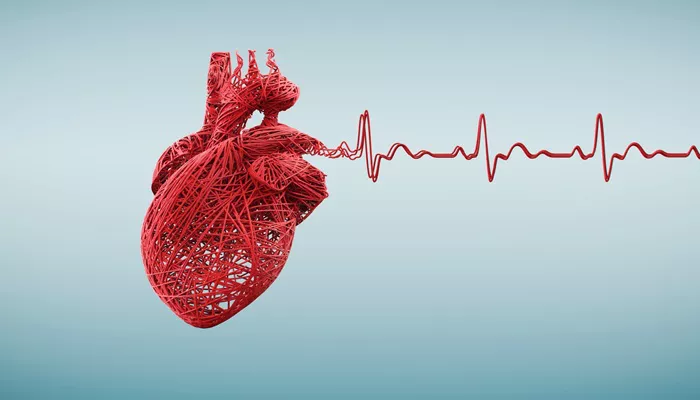Sinus arrhythmia is a variation in the heart rate that occurs when the heart’s sinus node, responsible for initiating the heartbeat, fluctuates with the breathing cycle. Typically, the heart rate increases during inhalation and decreases during exhalation. While sinus arrhythmia is often considered a normal variation, especially in younger individuals and athletes, it can sometimes be symptomatic or associated with other underlying conditions. Understanding and managing sinus arrhythmia can be crucial for maintaining overall heart health. Here are the six best ways to treat sinus arrhythmia:
1. Lifestyle Modifications
Lifestyle changes can significantly impact the management of sinus arrhythmia. These modifications not only improve heart health but also reduce the frequency and severity of arrhythmia episodes.
Healthy Diet
Consuming a heart-healthy diet is essential. This includes eating plenty of fruits, vegetables, whole grains, lean proteins, and healthy fats. Reducing intake of salt, sugar, and unhealthy fats can help maintain a healthy weight and lower blood pressure, which are beneficial for heart health.
Regular Exercise
Engaging in regular physical activity can improve cardiovascular health and reduce the occurrence of arrhythmias.
Activities such as walking, jogging, swimming, and cycling are particularly beneficial. However, it is important to consult with a healthcare provider before starting any new exercise regimen, especially if you have a heart condition.
SEE ALSO: What Is Re-Entry Ventricular Arrhythmia?
Stress Management
Stress can exacerbate arrhythmias. Techniques such as yoga, meditation, deep breathing exercises, and other relaxation methods can help manage stress levels and promote a healthy heart rhythm.
2. Medications
When lifestyle changes are not enough to control sinus arrhythmia, medications may be prescribed. These medications can help regulate heart rate and rhythm.
Beta-Blockers
Beta-blockers are commonly used to manage arrhythmias. They work by slowing down the heart rate and reducing the heart’s workload.
Common beta-blockers include metoprolol, atenolol, and propranolol.
Calcium Channel Blockers
Calcium channel blockers help relax the heart’s muscles and blood vessels, which can help control the heart rate. Examples include diltiazem and verapamil.
Antiarrhythmic Drugs
These drugs specifically target the electrical pathways of the heart to maintain a regular rhythm. Amiodarone and flecainide are examples of antiarrhythmic medications that might be used.
3. Monitoring And Regular Check-Ups
Regular monitoring and check-ups are crucial for managing sinus arrhythmia effectively. This helps in early detection of any changes or complications that might arise.
Holter Monitor
A Holter monitor is a portable device that records the heart’s activity for 24 to 48 hours. This can provide detailed information about the heart’s rhythm and help in diagnosing arrhythmias that may not be detected during a regular ECG.
Event Monitor
An event monitor is similar to a Holter monitor but is used for a longer period, typically 30 days. It can be triggered to record the heart’s activity when symptoms occur, providing valuable information to the healthcare provider.
Regular ECGs
Electrocardiograms (ECGs) are essential for monitoring heart health.
Regular ECGs can help detect any abnormalities in the heart’s rhythm and guide treatment decisions.
4. Treating Underlying Conditions
Sometimes, sinus arrhythmia is a symptom of another underlying condition. Treating these conditions can help manage sinus arrhythmia.
Thyroid Disorders
Hyperthyroidism (overactive thyroid) can cause an increase in heart rate and arrhythmias. Treating thyroid disorders with medication or other therapies can help normalize heart rhythm.
Sleep Apnea
Sleep apnea, a condition characterized by pauses in breathing during sleep, can contribute to arrhythmias. Continuous
Positive Airway Pressure (CPAP) therapy and lifestyle changes can effectively manage sleep apnea and reduce arrhythmia episodes.
Hypertension
High blood pressure is a risk factor for arrhythmias. Managing hypertension through lifestyle changes and medication can help reduce the risk of arrhythmias.
5. Medical Procedures
In some cases, medical procedures may be necessary to treat sinus arrhythmia, especially if it is severe or resistant to other treatments.
Catheter Ablation
Catheter ablation is a procedure used to destroy small areas of heart tissue that are causing the arrhythmia. This is done using radiofrequency energy or cryotherapy to create scar tissue, which blocks abnormal electrical signals.
Pacemaker
A pacemaker is a small device implanted under the skin of the chest. It sends electrical impulses to the heart to maintain a regular heart rate and rhythm. Pacemakers are often used for patients with severe or symptomatic arrhythmias.
Cardioversion
Cardioversion is a procedure that uses electric shocks to restore a normal heart rhythm. It can be done externally using paddles or internally through a catheter.
6. Holistic And Alternative Therapies
Holistic and alternative therapies can complement conventional treatments and help manage sinus arrhythmia effectively.
Acupuncture
Acupuncture involves inserting thin needles into specific points on the body to balance energy flow. Some studies suggest that acupuncture can help reduce the frequency of arrhythmias and improve heart health.
Herbal Supplements
Certain herbal supplements, such as hawthorn, valerian root, and magnesium, have been traditionally used to support heart health and manage arrhythmias. However, it is important to consult with a healthcare provider before using any supplements, as they can interact with other medications.
Mind-Body Practices
Mind-body practices such as tai chi, qigong, and biofeedback can help reduce stress, improve heart health, and manage arrhythmias. These practices promote relaxation and enhance overall well-being.
Conclusion
Sinus arrhythmia is often a benign condition, but it can be symptomatic or associated with other health issues. Managing sinus arrhythmia involves a comprehensive approach that includes lifestyle modifications, medications, regular monitoring, treating underlying conditions, medical procedures, and holistic therapies. By following these six best ways to treat sinus arrhythmia, individuals can improve their heart health and quality of life.

